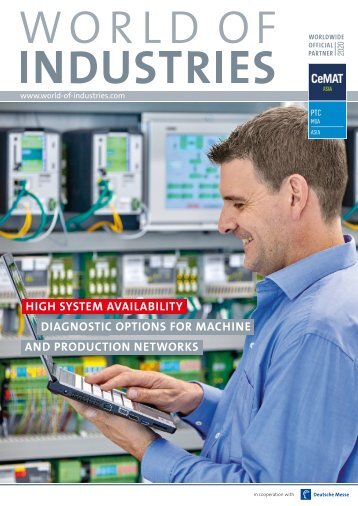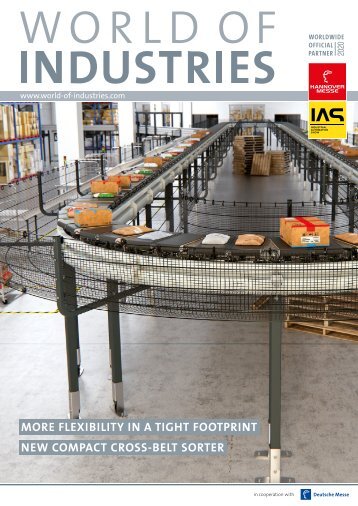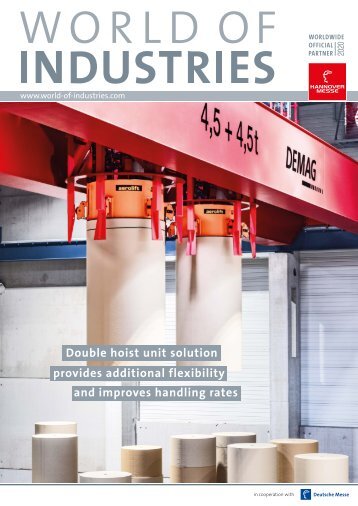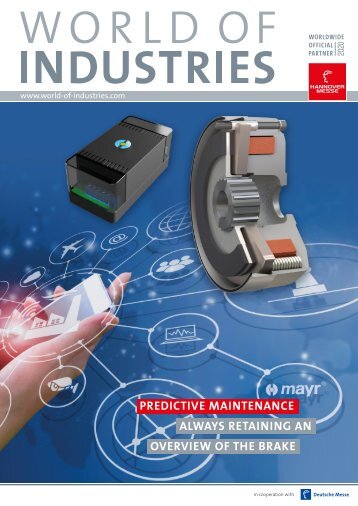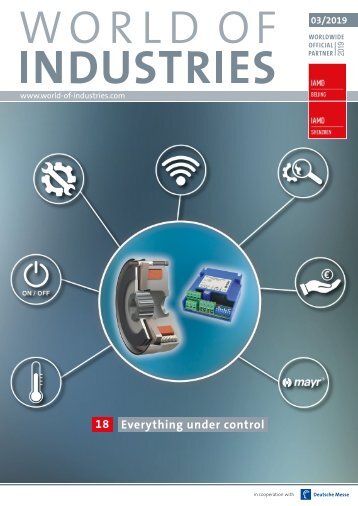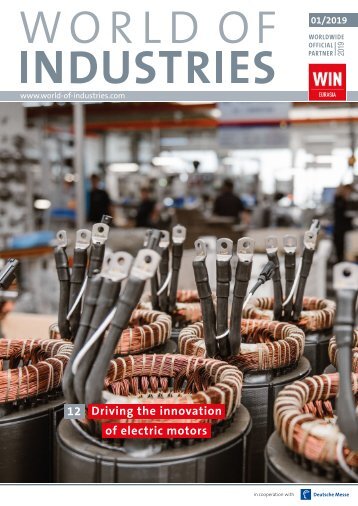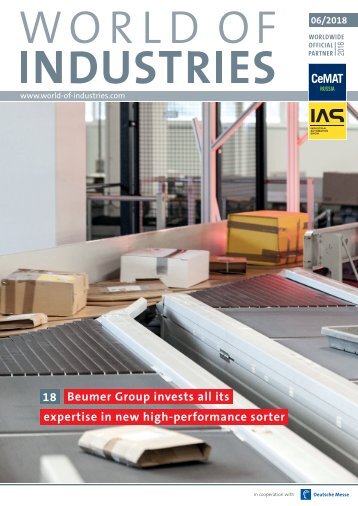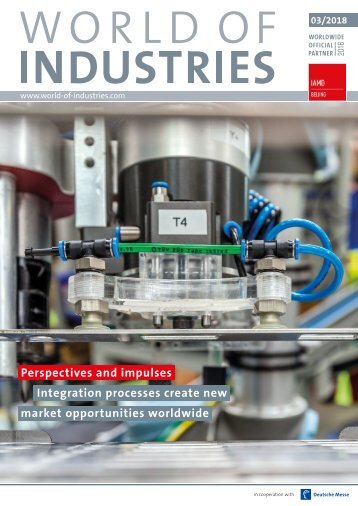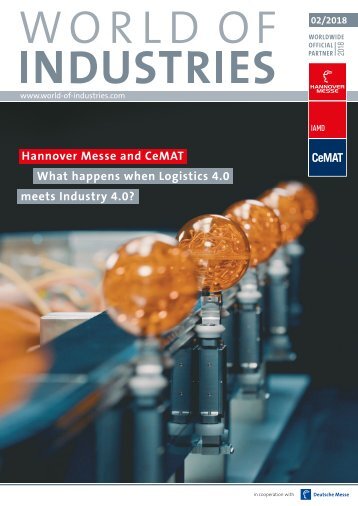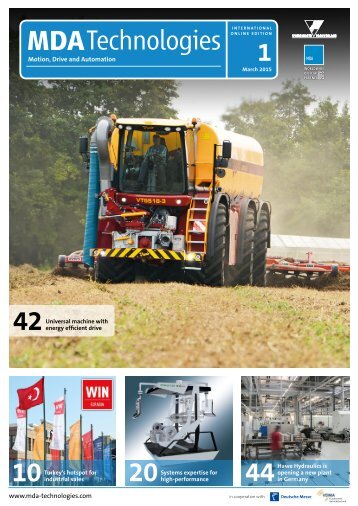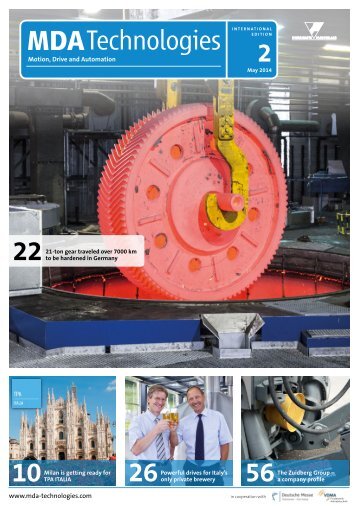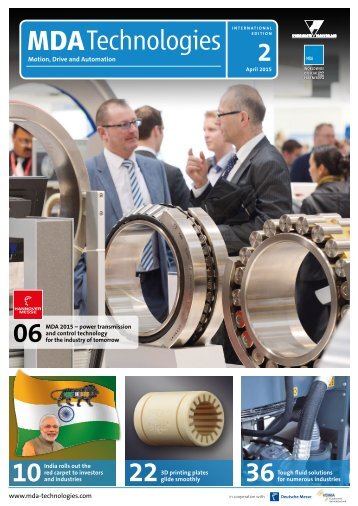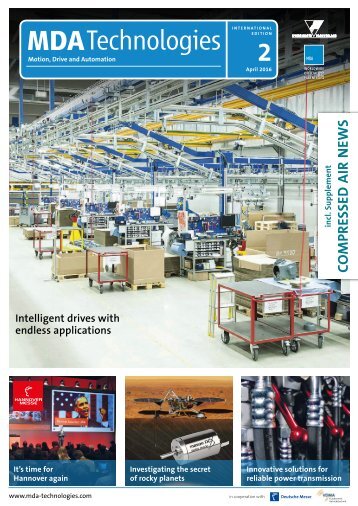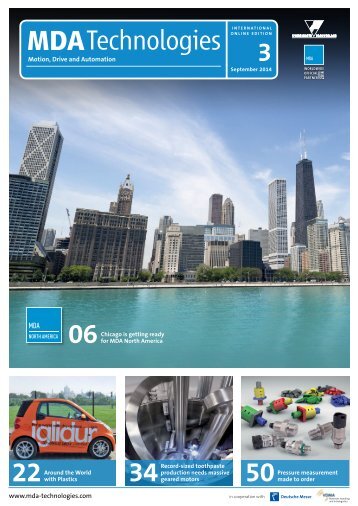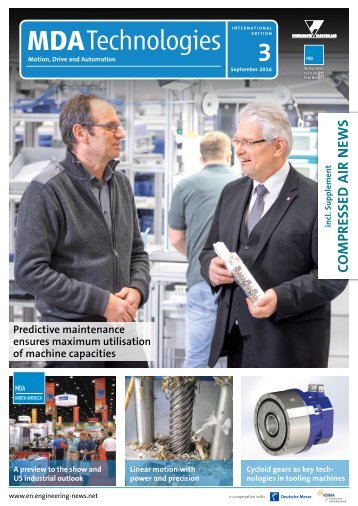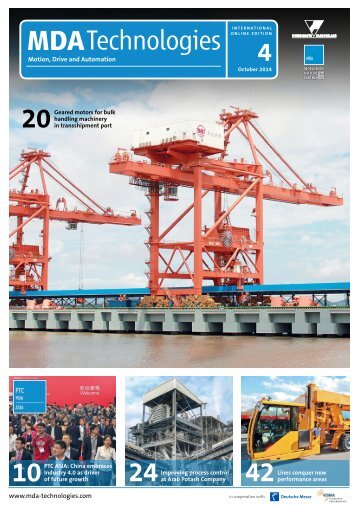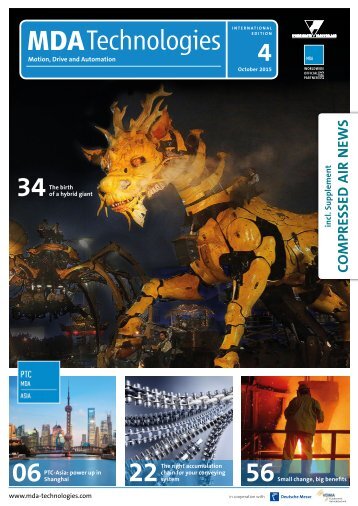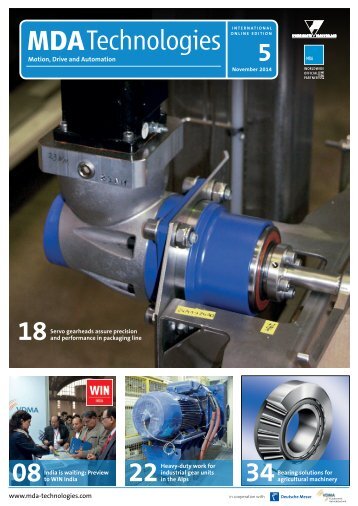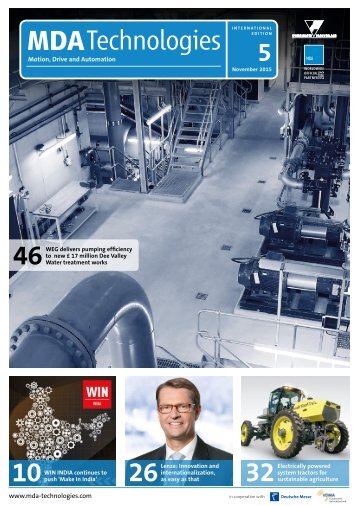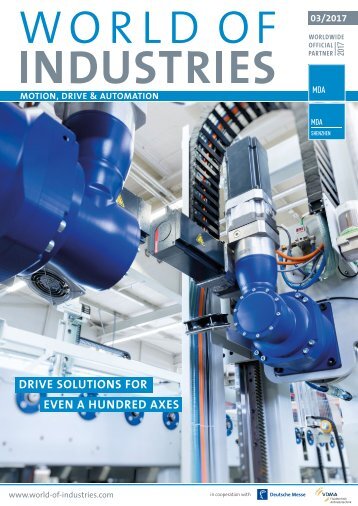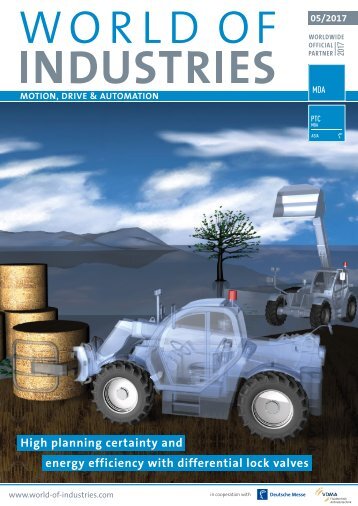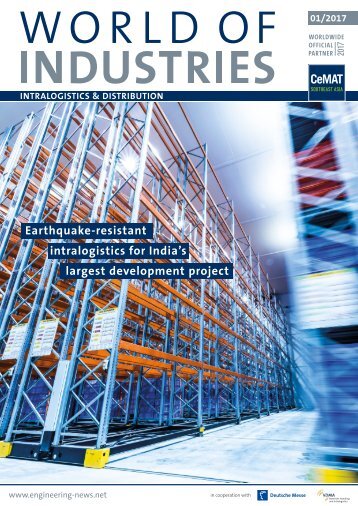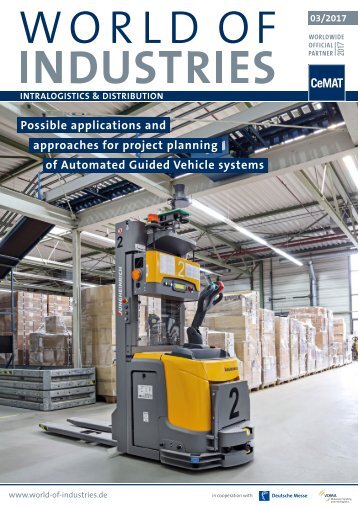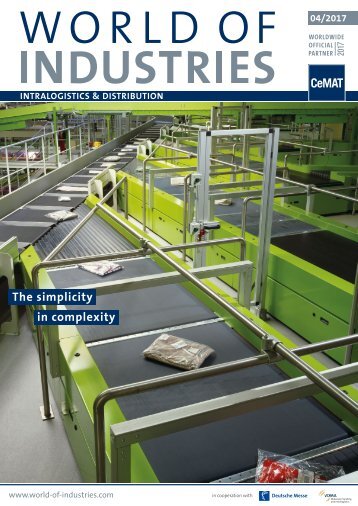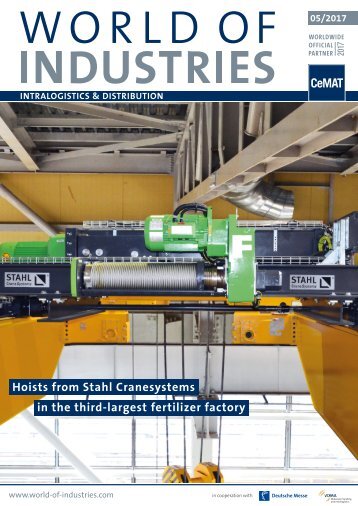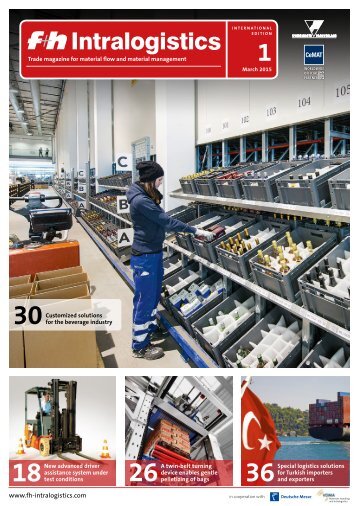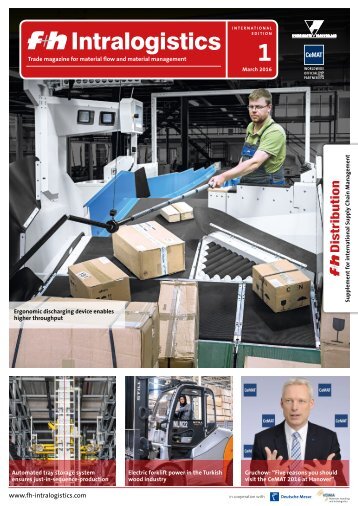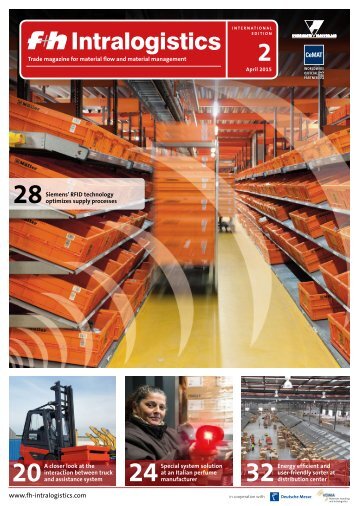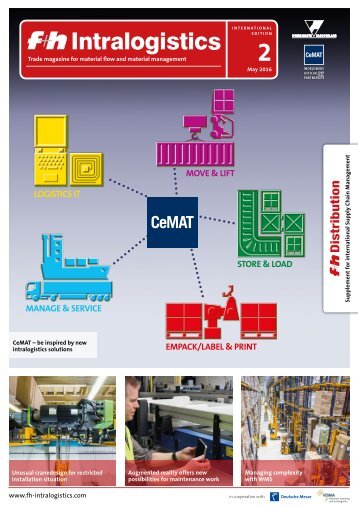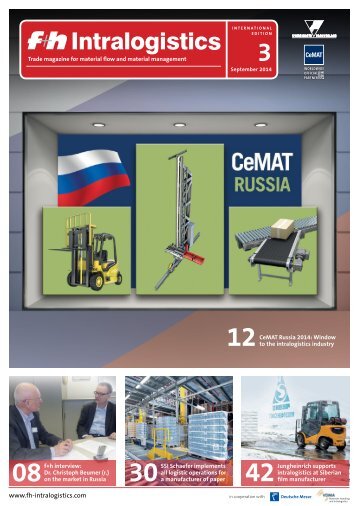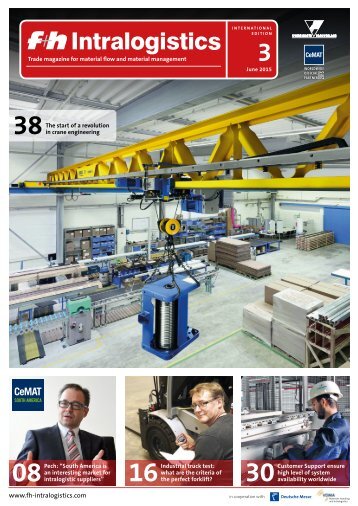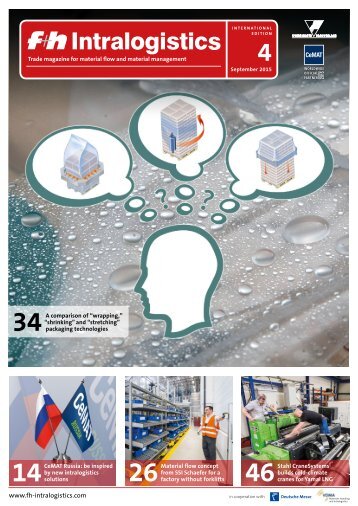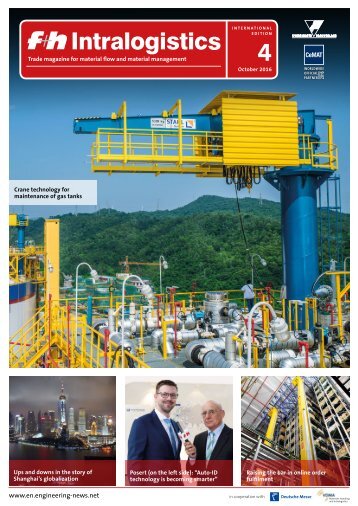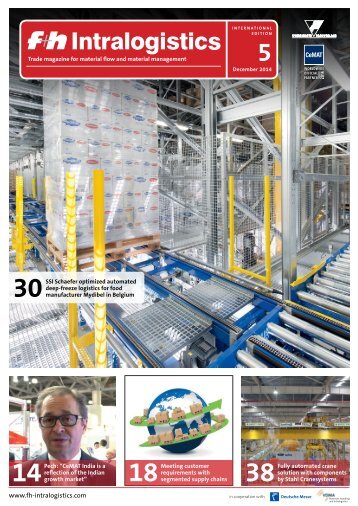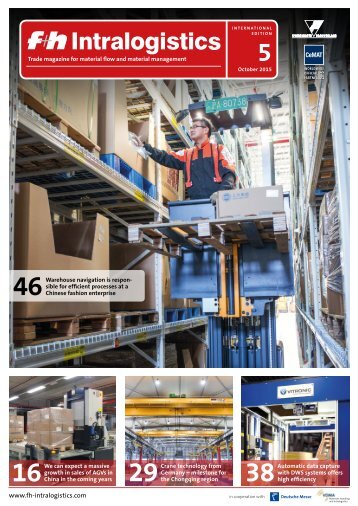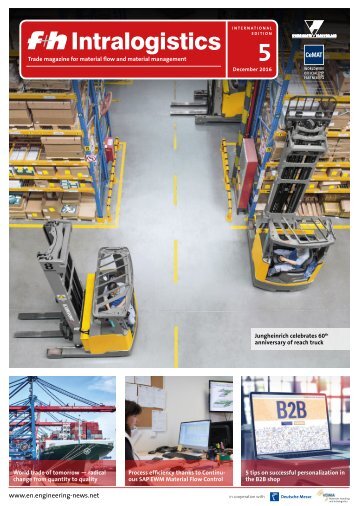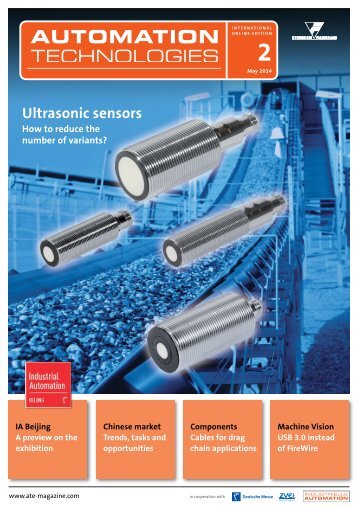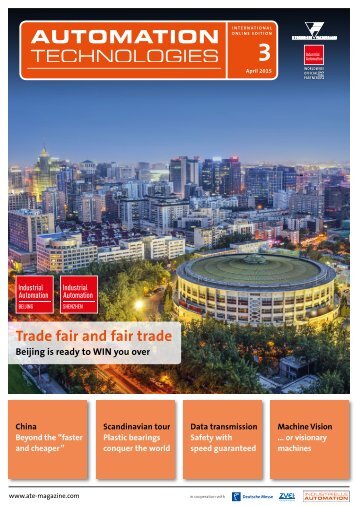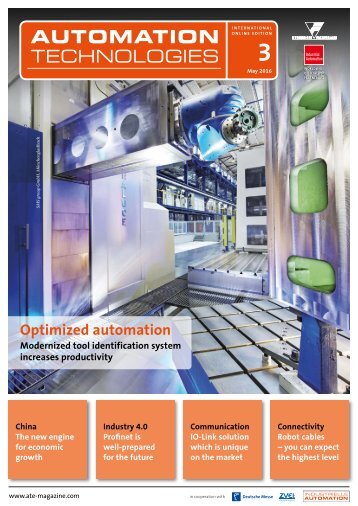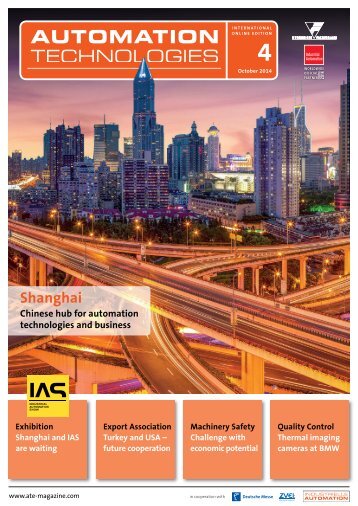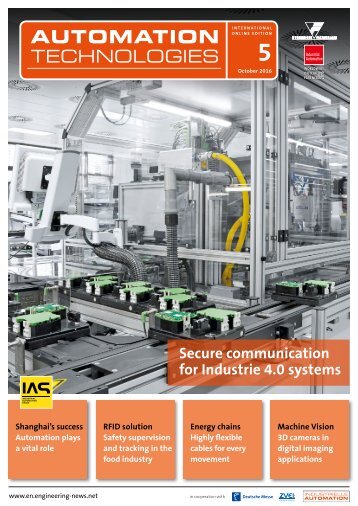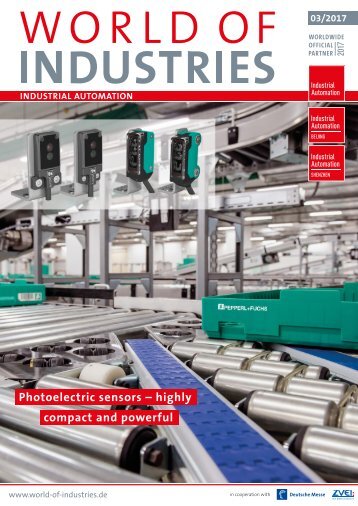f+h Intralogistics 5/2015
- Text
- Fuh
- Intralogistics
MARKET AND TECHNOLOGY
MARKET AND TECHNOLOGY China provides answers to global challenges: automation and digitization of industrial processes Li Li, Lothar Schulze To be able to survive in global competition, production and logistics costs must be lowered and process reliability increased in China also. At the same time there must be a change in global products offered, away from cheap mass produced products to high-quality goods. These challenges result in a substantial need for action and pressure for modernization. Prof. Dr.-Ing. Li Li, PhD, specialized in technical logistics, Ostwestfalen-Lippe University of Applied Sciences/Germany Prof. Dr.-Ing. Lothar Schulze is head of the specialist department responsible for planning and controlling warehousing as well as transport systems (PSLT) at the Leibniz University of Hanover/Germany Industrial robots are inevitable in China. More frequent use is driven by dramatically rising wage costs in the industrial regions of China. Thus China had a significant lead in global rankings of industrial robot sales in 2013, ahead of Japan, North America, South Korea and Germany. Japan leads the world in the number of industrial robots in use. Forecasts show Japan losing that position to China by 2017. This is based on the statistics of the International Federation of Robotics (IFR). Based on the usage level of industrial robots in China, we can also draw conclusions about the trend for using Automated Guided Vehicles (AGVs) in China. Accordingly we can expect further massive growth in sales of AGVs in China and Asia in the coming years. Automated Guided Vehicle Systems AGVs are by definition automated, in other words driverless vehicles (Image 01) which are floor-based rather than rail-guided. A master control unit is responsible for coordinating vehicles. Based on defined strategies, it assigns a vehicle to perform every transport task containing data related to source, sink and transport material. Vehicle orders are generated. AGVs together with the infrastructure of the specific application and the master control unit make up the AGV system. In nearly all conceivable applications, potential can be leveraged through automation with AGVs. The focus concerns not only transport tasks from a source to a sink, but increasingly also integrated system solutions with additional value-added tasks. AGVs not only perform transport tasks, but can also work in cooperation with employees. Vehicles in assembly are also referred to as a mobile workbench. Other examples of cooperative AGV applications can be found in picking and material supply. The focus in this context is on voice and gesture-controlled vehicles. Together with integration of modules, for example pickby-voice software, they represent the state of the art. Because applications and requirements vary so widely, vehicles and systems must be specifically engineered and designed. Every effort is made to use as many standard components and modules as possible. For example, manufacturers also offer subsequent automation of standard series lift trucks. The range of AGVs extends from lowcost carts to complex and sophisticated AGVs and their systems. Automated Guided Vehicles and their systems incorporate all the elements needed to make networking on the shop floor level a reality. So it should be no surprise 16 f+h Intralogistics 5/2015
MARKET AND TECHNOLOGY that in a comparison of industries, the frontrunner of industrial innovation in Europe, the automotive industry, led the way placing the most AGVs and AGV systems in operation in 2014. AGV manufacturers offer smart control systems with defined interfaces to the IT level. Data exchange can be implemented in real time, generally with wireless LAN. The elements needed for real-time optimi- zation and networking of vehicle and truck movements are all in place. Modern navigation systems ensure flexibility and changeability in terms of routes and routing (Image 02). Laser navigation with reflectors as artificial field markers and scan matching with supporting coupling navigation provide ideal options for this purpose. The scan matching process, in which a current scan is compared with a reference model, does not require any of these artificial field markers. AGV and Industry 4.0 Some current European position papers offer the assessment that Industry 4.0 plays a minor role in China. But our experience points to exactly the opposite conclusion. The approaches of Industry 4.0 are part of the modernization agenda of the Chinese government. Numerous groups of Chinese engineers and managers are currently visiting German universities to learn more about this new approach to industry. Seminars on Industry 4.0 are being organized for these groups, for example by the Chinese Center of Hannover and university lecturers at Leibniz University. Industry 4.0 and the idea of the Smart Factory are also hot topics in China. Concepts and approaches will be localized as they have been for other industrial products by adapting them intelligently to Chinese conditions. Automation and digitization in factories offers a wealth of opportunities to respond to the requirements of the global marketplace in terms of changeability, individualization and flexibilization. Implementation of Industry 4.0 entails complete networking of information. On the ERP level this concerns different companies, for example the networking between the producing company and its suppliers. On the shop floor level, machines, 01 AGV networks production Dynamic performance on two rails. The inductive floor conveyor: innovative and efficient. Visit us at CeMAT Asia 27 to 30 Oct. 2015, in Shanghai, Hall W2, Booth C2 www.eisenmann.com
- Page 1 and 2: Intralogistics Trade magazine for m
- Page 3: TABLE OF CONTENT 06 News an informa
- Page 6 and 7: Worldwide News arvato operates glob
- Page 8 and 9: ECONOMY & MARKET THE FUTURE of CHIN
- Page 10 and 11: ECONOMY & MARKET Logistics costs in
- Page 12 and 13: TRENDS AND DEVELOPMENTS Science fic
- Page 14 and 15: TRENDS AND DEVELOPMENTS zero invent
- Page 18 and 19: MARKET AND TECHNOLOGY About PSLT Th
- Page 20 and 21: MARKET AND TECHNOLOGY I INTERVIEW I
- Page 22 and 23: CEMAT ASIA NEWS The Chinese economy
- Page 24 and 25: Product Innovations Global excellen
- Page 26 and 27: CRANES & HOISTS Demag hybrid crane
- Page 28 and 29: CRANES & HOISTS Split crane arrange
- Page 30 and 31: MATERIAL FLOW Suning Commerce Group
- Page 32 and 33: MATERIAL FLOW CNSS successful with
- Page 34 and 35: MATERIAL FLOW Sometimes they do com
- Page 36 and 37: MATERIAL FLOW 02 The Sorter BS 25 E
- Page 38 and 39: IDENTIFICATION Automatic data captu
- Page 40 and 41: IDENTIFICATION Logistics provider W
- Page 42 and 43: WAREHOUSING Viastore replaces WMS a
- Page 44 and 45: WAREHOUSING The software offers an
- Page 46 and 47: WAREHOUSING 01 Beside order picking
- Page 48 and 49: WAREHOUSING German warehouse system
- Page 50 and 51: I for Intralogistics, I for India S
- Page 52 and 53: INTRALOGISTICS MARKET INDIA I SPECI
- Page 54 and 55: INTRALOGISTICS MARKET INDIA I SPECI
- Page 56 and 57: BATTERY CHARGERS Round-the-clock de
- Page 58 and 59: Product News CS plastic pallet from
Inappropriate
Loading...
Mail this publication
Loading...
Embed
Loading...

